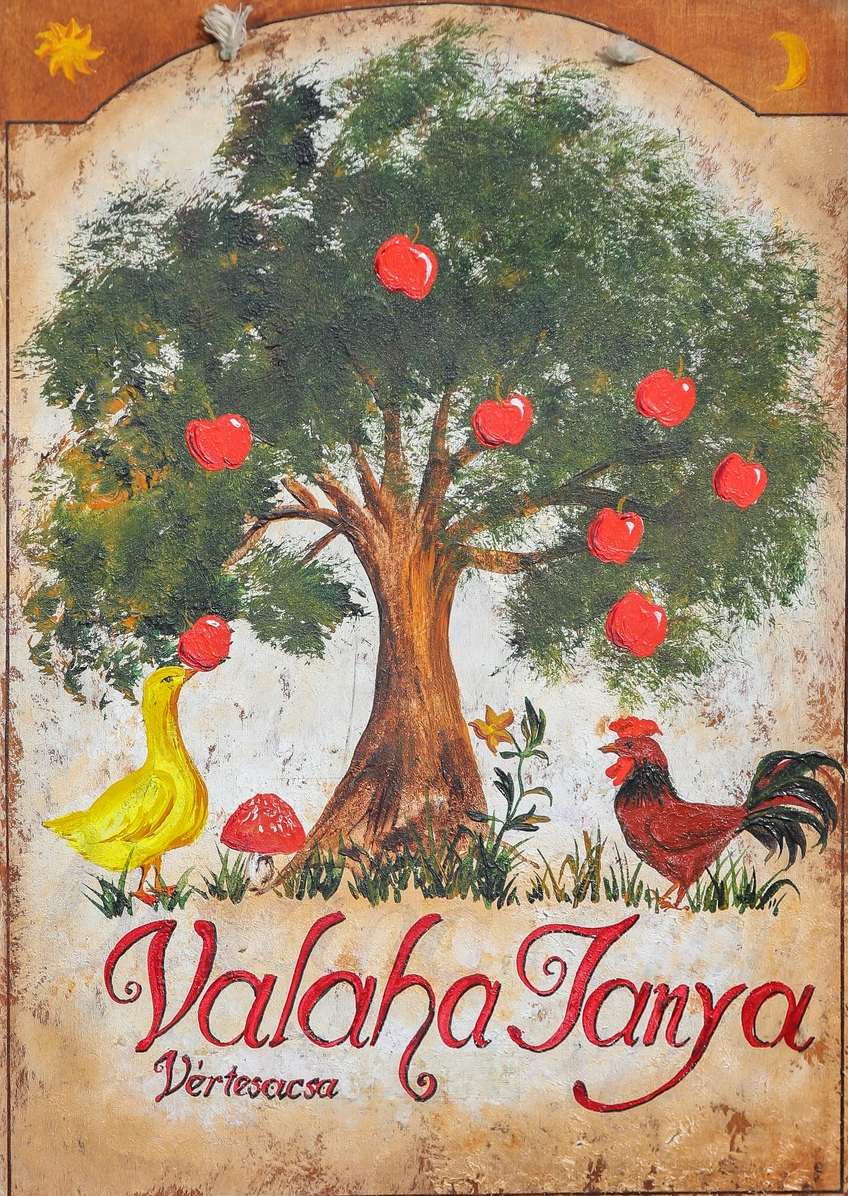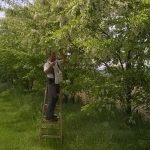Living Lab 4: Hungary
Valaha Tanya Farm
Managed by: Balázs Kulcsár, owner
General information
The living lab is located above the Lake Velence, 30 km from Székesfehérvár and 50 km from Budapest.
In 2006, the farmer and his wife bought a 12-hectare field full of weeds in Vértesacsa, next to the closed gardens. The organic farm was gradually developed in the area, with different types of plant crops and animals. Their work was difficult and challenging, as the area had previously been intensively cultivated with all the “beauty” of conventional technology.
The farm’s success is based on the combined application of agroforestry, permaculture, and organic farming, as well as its owners’ enthusiasm technical and economic expertise. One difficulty they encountered in developing their new farming activities was that previously, the land was occupied by large fields of agricultural monocropping and located in a hilly and windy area. Their land is still surrounded by big, intensively cultivated agricultural parcels.
General farming approach
Integrated farming, permaculture, organic
Objectives
fruit cultivation for processing, fodder cultivation, firewood production; feed production; area demarcation, microclimate service, bee pasture; mushroom cultivation, Christmas tree cultivation, soil acidification, (blueberry cultivation); wild fruit cultivation, fuel cultivation.
Challenges
Chemical pollution from the adjacent intensive agricultural areas
Plants affected by strong winds
Area sensible for drought, which affects productibility
Research goals
Planned research activities include:
- Biodiversity assessment (Assessment of abundance of indicator species/ QBS/ Plant biodiversity survey)
- Assessment of site conditions
- Soil pollution / soil richness test / Yield quality tests
- Environmental footprint analysis
- Remote sensing surveys identification
Design of the agroforestry system
Wild fruit plantation 1,6 ha.
Main crop/tree types: Medicago sativa, Onobrychis viciifolia, Trifolium repens, Lotus corniculatus, Melilotus spp., Poa spp., Festuca spp., apple, pear, quince, cherry, sour cherry, medlar, plum, apricot, peach, wild apple, wild pear, wild strawberry, gooseberry, house gooseberry, linden, acacia, hawthorn, gorse, acorn, black elder, chokeberry, wild rose. Livestock species: goat, cattle, chicken, horse, donkey
Site management:
- improved orchard: extensive pruning 1-2 times a year, composted stable manure and compost extract leaf fertilizer every 4 years
- wild orchard: cleaning pruning and thinning as needed
- shelterbelt: trunk cleaning, removal of damaged branches (winter ice damage)
- irrigation just in berry orchard: drip irrigation 5 times/year
- fertilization when planting with own manure
Monitoring
- Currently available baseline information: area (ha).
- Soil and climate data: soil properties, soil depth, altitude, annual mean temperature, annual mean precipitation
- Agroforestry components: tree density, annual crops/grass, trees animals
- Agronomic productivity: milk (liter/year), fodder (kg/ha/year), woodchips (kg/ha/year), meat (kg/year), fruit (kg/year)
- Biodiversity: earthworm piece/m2

Hungary

9,45 ha
1. Silvoarable 5,6 ha
2. Wood pasture 1,5 ha
3. Shelterbelt 0,25 ha
4. Afforestation for multiple purposes 0,5 ha
5. Wild fruit plantation 1,6 ha

Silvoarable, Woodland grazing/wood pasture

Subsistence and services such as horse riding, riding camp; also research, education, training, and rural festivals venue

16 years (established in 2007)

Inter-row/In-row distance: improved orchard: 6 m wild orchard: ~6m/ improved orchard: 5 m, wild orchard: ~2m, shelterbelt: 2 m

Width of tree strips: in orchard: 2 m; in the 1400 m long single-row shelterbelt: ~ 2 m

Number of trees:
1. 350 trees/hectare
2. 400 trees /hectare (tree+shrub)
3. 400 trees /hectare (tree+shrub)
4. 2500 trees /hectare
5. 800 trees /hectare (tree+shrub)

Mixed with livestock, horticulture, arable

Livestock: Yes (goat, cattle, chicken, horse, donkey)










